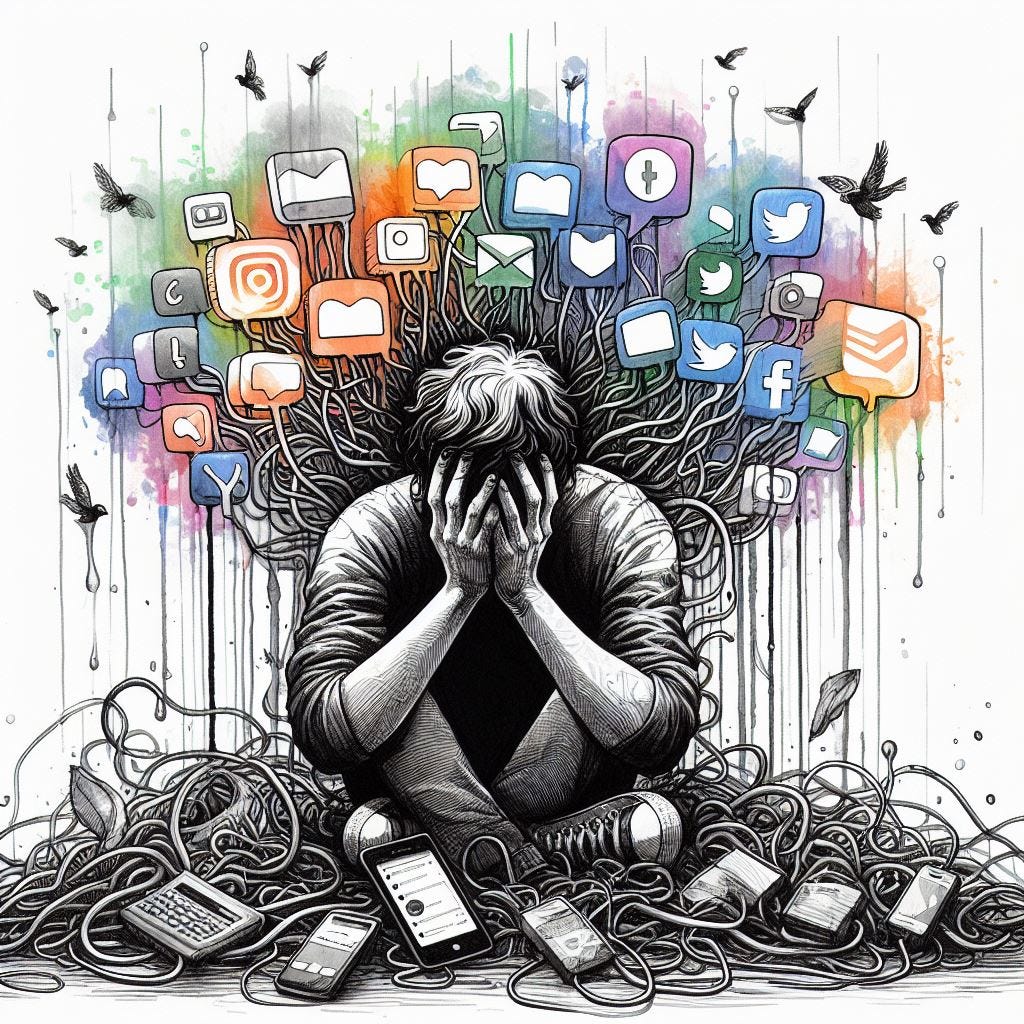A key moment where I realized that UX Designers lost the plot was when the iPhone 14 Pro was announced, and the collective design world lost their shit about something called the “dynamic island”.
The dynamic island is a pill-shaped zone on the upper side of the iPhone display. It hides the camera hardware with a shape-shifting UI element for iPhone alerts or other ongoing activities.
It’s a clever little design solution for the constraint of having a camera at the front that takes space away from the screen.
But designers celebrated it like it was the greatest innovation since the iPhone itself.
For weeks articles were written, praising this amazing innovation Apple has blessed us with.
Don’t get me wrong, it’s a cute little design gimmick. But if this is celebrated as a great innovation in my industry, I begin to understand why UX Designers are fired left and right and judged to provide little value.
Before you take out the pitchforks…to understand my point of view, let’s dive into the history of Interface Design to see what real innovation looks like.
The History of Human-Computer Interfaces
In the early days, computers belonged to institutions. This was the mainframe era. One giant computer was used by many people. All users had to code their inputs into physical punch cards that were fed into the machine to make their calculations. The profession of UX Design did not exist yet.
Commissioned by the US military in the 1960s the Internet was birthed, initially serving as a backbone for interconnecting academic and military networks.
The internet quickly captured the imagination of the counter-culture.
“The hackers and hippies saw it as an extension of the human nervous system. Each human brain was understood to be a node in a giant network. The internet would transform humanity into the planet’s brain; Gaia, the planet’s spirit, was become fully conscious.”
Douglas Rushkoff in Team Human
But the way computers were used at that time was still very unintuitive. Users had to input lines of text using a command-line interface. This was a step forward compared to the punch-card interface, but you still had to be a specialist and know all the possible commands.
It was inaccessible to everyone else.
This began to change when in the 60s, the LSD-revolution found its way to the Stanford Research Institute where Douglas Engelbart was head of the Augmented Human Intellect Research Center.
He and his team engaged in controlled experiments with acid to spark innovative breakthroughs.
And breakthroughs there were.
In 1968, Engelbart demonstrated a futuristic world of biblical proportions. For the first time, an audience saw - on a computer screen and controlled by a mouse - windows, hypertext links, graphics, efficient navigation, and video conferencing. An event since known in the tech hall of fame as “The Mother of All Demos”.
His conceptual vision for the computer was the “augmentation of human intellect” via an interactive vehicle navigating through “thought vectors in concept space.” Far Out!
This vision inspired a collection of researchers who were “eager to be augmented” like Alan Kay, Butler W. Lampson, Charles P. Thaker, Mark Weiser, and many more. They came together and invented interactive design and interfaces as we know them today. Graphical user interfaces (GUIs), windows, checkboxes, radio buttons, menus, mouse, object-oriented programming, laser printing, ethernet standards, and many other things related to modern computing were developed at the legendary research center Xerox PARC.
A few principles were critical to their success:
Visions not goals. A great vision acts like a magnetic field from the future that aligns all the little iron particle artists to point to “North” without having to see it.
People not projects. Find insanely talented people whose doings are likely to be highly interesting and important and let them work with little oversight.
Don’t make anything that is not engineered for 100 users – to avoid fragile tech demos that break easily.
Skin in the game. Every researcher should have to use their own creation as their main computing system.
Human-centered design. They tested their interface on nonprogrammers which nobody had done before.
Apple and Microsoft stole their ideas, commercialized them, and built their empires on their booty.
Every UX Designer should study this era to realize what true innovation is.
A visual clickable interface enabled personal computers to enter households. The future looked golden. Computer technology was a great promise.
The promise was to help us humans realize our full potential, make our lives better, and give us superpowers to solve problems.
Let’s jump 50 years into the future to the present day.
If we look at what has become of this dream, a bleak picture reveals itself.
The internet‘s tremendous social and intellectual potential was surrendered to short-term market priorities, turning a human-centered medium into a platform for manipulation, surveillance, and extraction.
The freedom of the internet was quickly commercialized, and tech monopolies claimed the digital real estate to extract our attention. They invaded our privacy and collected as much data as they could to feed us targeted advertisements.
“Google and Facebook have a lock on digital ads that are wrapped around music, videos, and news online. Google, along with Apple, is the gatekeeper of everything mobile, giving them a massive cut on games, books, music, and movies. Via YouTube, it controls video streaming…
Amazon has an iron grip on book, eBook, and audio-book sales, and dominates eBook and audiobook production.”
Cory Doctorow & Rebecca Giblin in “Chokepoint Capitalism”
To maximize engagement, social media algorithms were designed to cater to our most primal urges: Envy, lust, and rage.
“While we’ve been upgrading the machines, we’ve been downgrading our humanity”
Douglas Rushkoff
Mike Monteiro shines a light on who is to blame in his book “Ruined by Design”:
“The promise of the internet was that it was going to give voice to the voiceless, visibility to the invisible, and power to the powerless. …
For a while it was beautiful, it was messy, and it was punk as fuck….
We were the ones who were supposed to guide it there. We failed.
We designed and built platforms that undermine democracy across the world.
We designed and built technology that is used to round up immigrants and refugees and put them in cages.
We designed and built platforms that young, stupid, hateful men use to demean and shame women.
We designed and built an entire industry that exploits the poor in order to make old rich men even richer.”
The profession of UX Design has forgotten its roots of Engelbart and Xerox PARC and seems to have abandoned every ambition for human-centered innovation. They failed to establish a seat at the table and became mere servants of the business class to fulfill their broken goals.
They should have been the advocates of humanity to guide technology towards its promised golden future. Instead, as a powerless underclass, their focus shifted toward another goal: Efficiency.
To achieve efficiency in design, elaborate design systems were implemented that take a lot of work and skill to build and maintain.
It made user interfaces consistent, mature, and achieved better usability for users.
But I get the feeling that design systems transformed a class of people who were oozing creativity and turned them into “civil servants” who now mostly think about following and enforcing established design rules.
A new class was born—the class of the design bureaucrat.
At the same time, the emergence of a data-centric culture fostered a generation of designers who only pursue risk-averse and success-assured actions towards the inevitable local maxima of design uniformity.
“We rigorously run tests, studies, experiments as if innovative ideas are hidden in spreadsheets, waiting to be extracted.”
Chuánqí Sun in “The vanishing designer”
The result is that today every design looks the same. Most designers end up as replaceable commodities on the labor market.
We still have innovation, but it comes almost entirely out of the realm of engineering.
For example, Augmented Reality is an exciting new platform that gives us designers a brilliant playground for radical ideas.
Yet all I see are the same UI elements we use on laptops and smartphones – like collections of 2D cards and 2D menus. But hey, now they are floating around in 3D space…
UX Designers should reclaim their place as innovators
Designers should take the gifts of the engineers like generative AI, Augmented Reality, Virtual Reality, Blockchain networks, drones, robots, cheap powerful sensors, RFID tags, Smart fabrics, and haptic suits, to redefine what it means for a human to interact with computers.
We should think about how to bring these new mediums to their highest potential. Yet we haven’t even done that with PCs and smartphones.
I know it is important to standardize. I don’t even think that standardization is incompatible with creativity. I am not against design systems; they definitely have value - as does working in a data-driven way. But if we accept that this is all we do as designers, we become accountants who are just there to enforce the design bureaucracy we created.
Don’t be a design bureaucrat.
I am convinced that by creating more innovation in the realm of design we can claim our seat at the table and influence the future to make it more human-centered. We must stop being obsessed to avoid failure and start trying to “capture the heavens”.
Innovation must not stop at engineering. It is the responsibility of us designers to find new representations to push the new mediums and technological wonders to the highest level; to mend technology so that humans can use the full potential of their minds, instead of just a tiny part of it.
This is, of course, no easy task. But we can learn from the titans of the past to guide us.
One powerful tool to achieve human-centered innovation is something called “First-Principle Thinking”. When engineers use this method, they start with fundamental physics and try to find new solutions from there. We designers have to start someplace else.
I’ll explain how to do this in detail in my next article.
Subscribe to my newsletter to not miss it. It’s free.
Readings
Kuang, C., & Fabricant, R. (2019). User friendly: How the hidden rules of design are changing the way we live, work & play. Random House.
Doctorow, C., & Giblin, R. (2022). Chokepoint Capitalism: How Big Tech and Big Content Captured Creative Labor Markets and How We'll Win Them Back. Beacon Press.
Rushkoff, D. (2020). Team human. Ledizioni.
Monteiro, M. (2019). Ruined by design: How designers destroyed the world, and what we can do to fix it. Mule Design.
Chuánqí Sun. The vanishing designer.
Kay, A. C. (2004). The power of the context. Research Technology Management, 47(6), 14-15.








